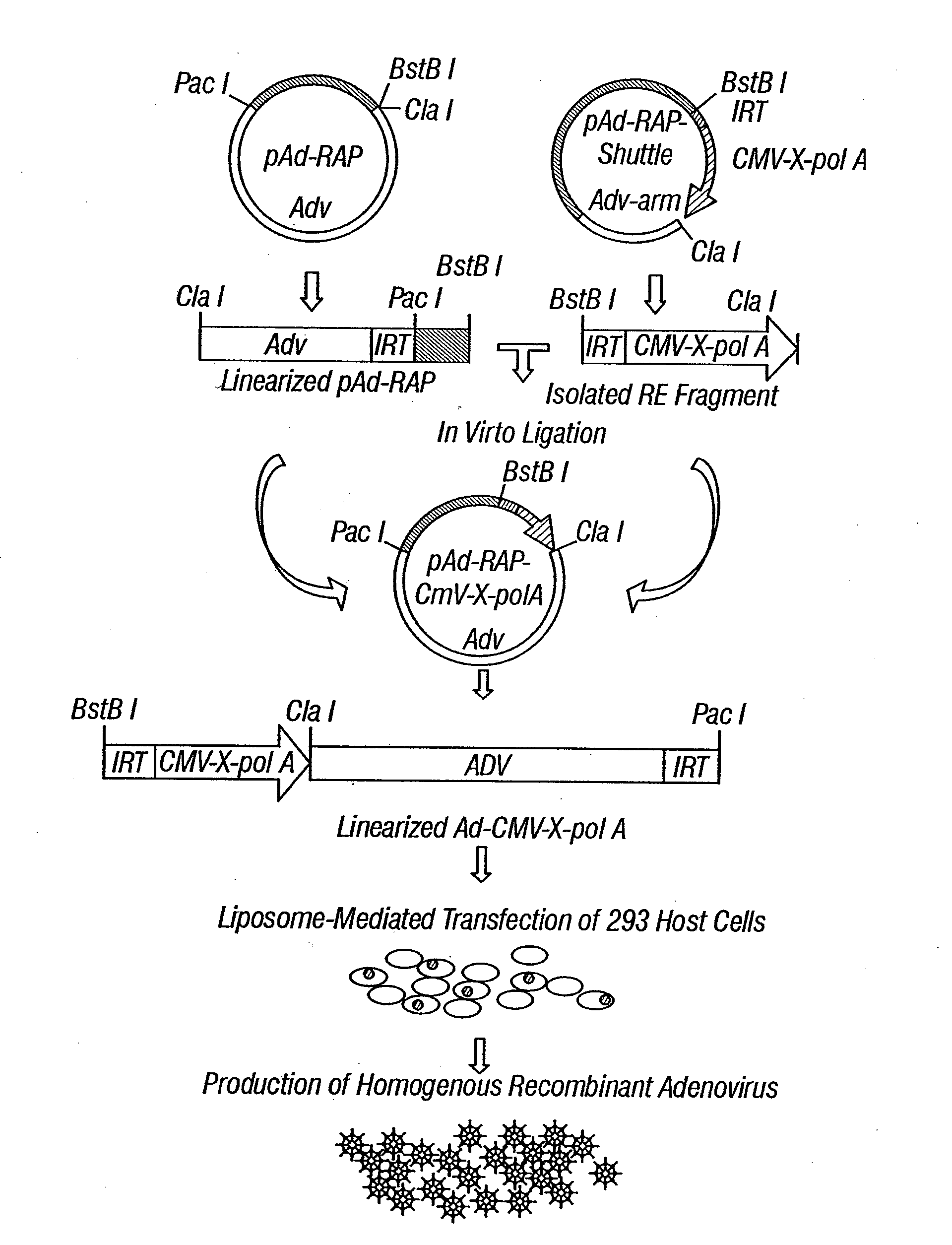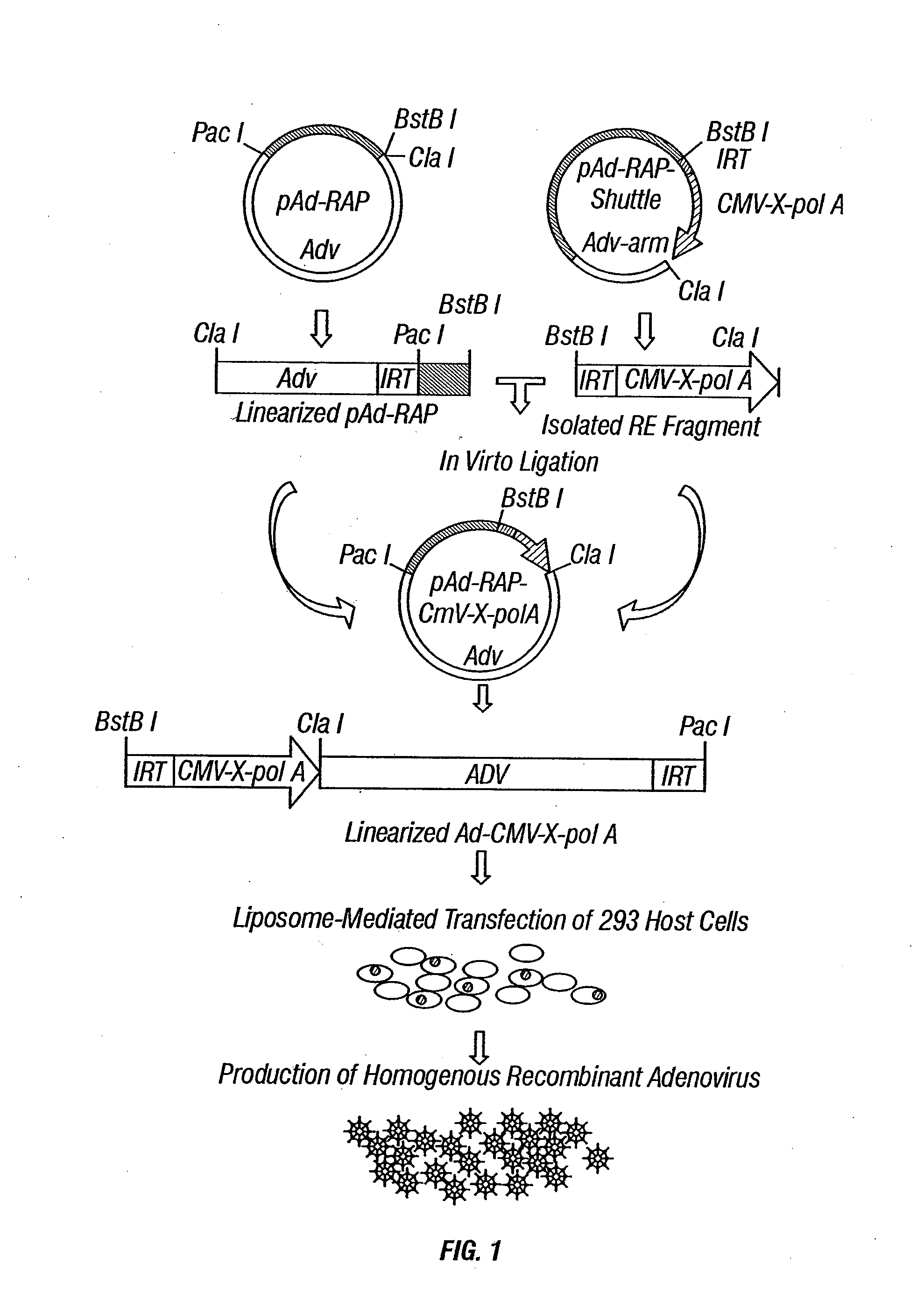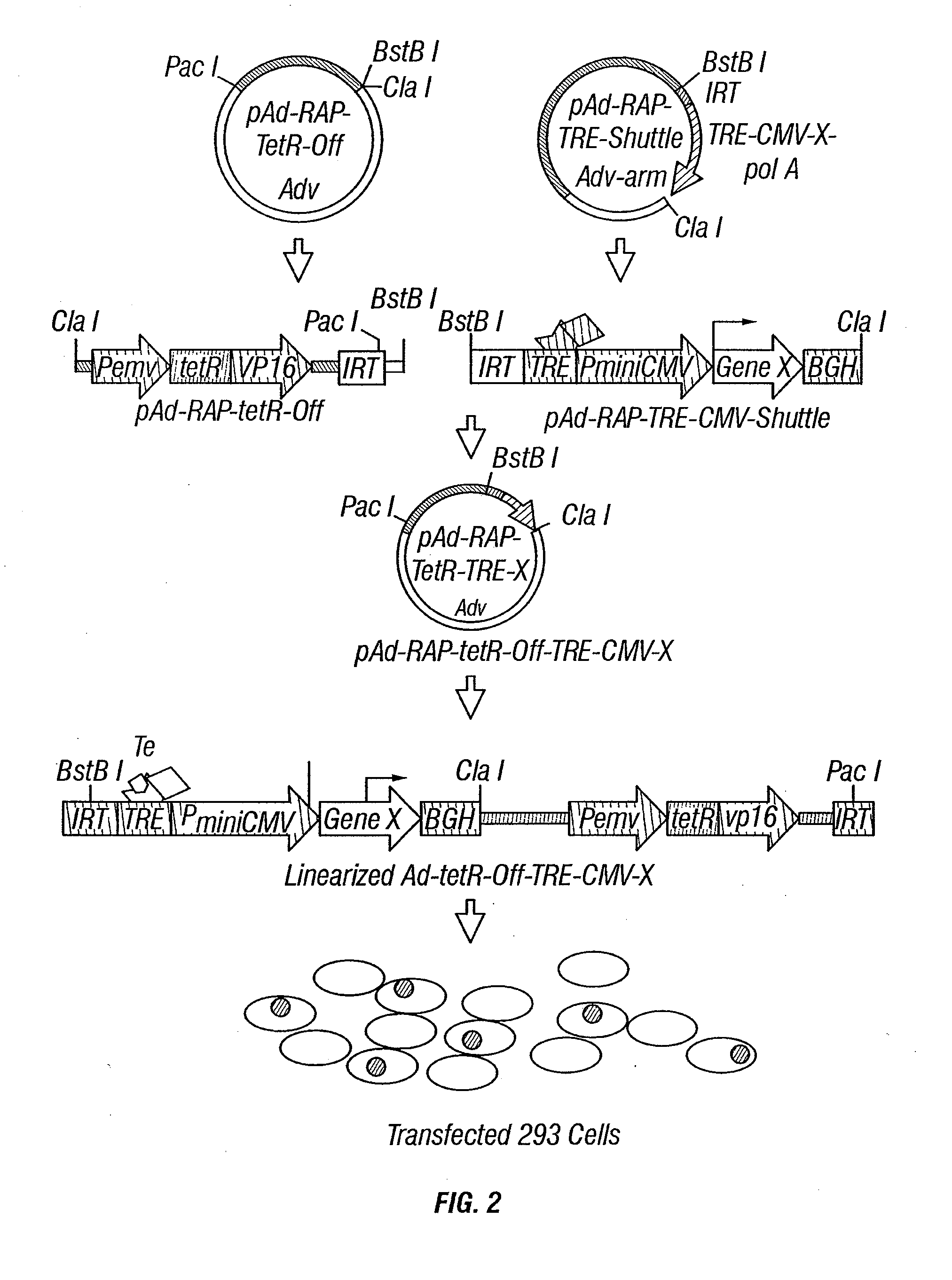CHROMOSOME 3p21.3 GENES ARE TUMOR SUPPRESSORS
- Summary
- Abstract
- Description
- Claims
- Application Information
AI Technical Summary
Benefits of technology
Problems solved by technology
Method used
Image
Examples
example 1
Identification of 3p Genes in 3p21.3 Critical Region and Isolation of cDNA of 3p Genes
[0291]The 3p tumor suppressor region was identified by allelotyping designed to search for areas of LOH in matched tumor / normal tissue pairs, and examine uncommon examples of homozygous deletions (FIG. 4). The most frequently involved region showing allele loss in lung cancer was mapped to the 3p21.3 region. Furthermore, multiple overlapping homozygous deletions have been found in the 3p21.3 chromosome region in SCLC lines H740 and H1450, which narrowed down the search for the tumor suppressor genes flanking about 750 kb in 3p21.3 region. Nine genes, Fus1, 101F6, NPRL2 (Gene 21), CACNA2D2(Gene 26), HYAL1 (Luca 1), HYAL2 (Luca 2), PL6, 123F2, and Beta*, were either disrupted or immediately flanking a 35 kb homozygous deletion found in the 3p21.3 region. SEM A3 is also present in the 3p21.3 region. The cDNAs of these genes were isolated and cloned, and mutations in these genes were determined in vari...
example 2
Construction of Recombinant Adenoviral Vectors of 3p Genes
[0292]Adenoviral vectors have been widely used for gene delivery in vitro, in animal models, preclinical research, and human clinical gene therapy trials. The high efficiency of transduction and high-level expression of transgenes mediated by adenovirus vectors in various cell types are reasons why the recombinant adenoviral vectors expressing the 3p genes (Ad-3ps) are effective tools for introduction of the functional wild-type 3p genes into tumors or tumor cell lines with abnormalities of 3p or 3p genes.
[0293]Recombinant adenoviral vectors of 3p21 genes, including Gene21, Fus1, 101F6, Gene 26, 123F2S, Luca1, and Beta*, have been constructed using the inventors' recently developed ligation-mediated plasmid-adenovirus vector construction system, pAd-RAP and pAd-RAP-Shuttle. The inventors have successfully and rapidly constructed recombinant adenoviral vectors for all ten genes in the 3p21.3 region and many other recombinant v...
example 3
Preparation of PAD3ps
[0297]The preparation of protamine-adenovirus (PAD) complexes and enhancement of transduction efficiency by PADs in vitro and in vivo have been reported47,48. The protamine-adenovirus complexes were prepared by simply mixing 1×1010 viral particles with 50 μg of protamine sulfate (10 mg / ml). The complexes were incubated for 10 min at room temperature, and then the complexed adenovirus were diluted in an appropriate volume of PBS for designated in vitro or in vivo experiments.
PUM
| Property | Measurement | Unit |
|---|---|---|
| Volume | aaaaa | aaaaa |
| Volume | aaaaa | aaaaa |
| Volume | aaaaa | aaaaa |
Abstract
Description
Claims
Application Information
 Login to View More
Login to View More - R&D
- Intellectual Property
- Life Sciences
- Materials
- Tech Scout
- Unparalleled Data Quality
- Higher Quality Content
- 60% Fewer Hallucinations
Browse by: Latest US Patents, China's latest patents, Technical Efficacy Thesaurus, Application Domain, Technology Topic, Popular Technical Reports.
© 2025 PatSnap. All rights reserved.Legal|Privacy policy|Modern Slavery Act Transparency Statement|Sitemap|About US| Contact US: help@patsnap.com



